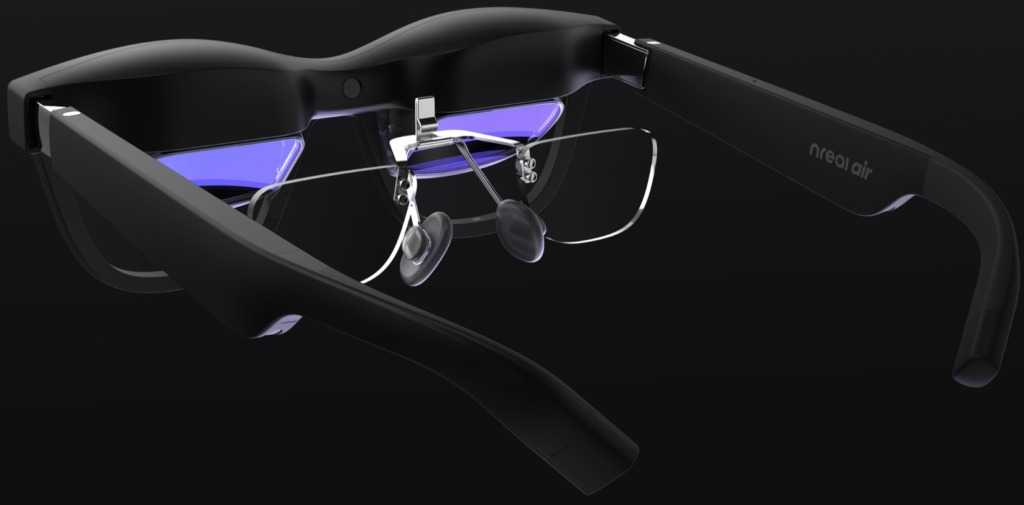Category: AR / VR
the thing no one will say about Apple Vision Pro
Working in the Vision Pro
Experiments with hard light
GDC 2023 – Nreal

[Nreal] is a compact AR headset with [SDKs for Android]. The shop has [dev kits] for sale [$1199 per unit + $499 lenses]. For retail, the Light edition is [$599] and the Air edition is [$379].
I Only Played Fitness Games for 30 Days
The Unspoken Reality of VR | Can We Talk About This?
FINALLY! The NEWEST VR Omni-Directional Treadmill is HERE!
Lightship Summit 2022
Niantic ARDK
[Niantic ARDK] augmented reality – depth sensing SDK
Real Time Tracking & Projection Mapping (Full ver.)
Magic Leap reportedly laying off 1,000 employees and dropping consumer business
VR Systems
OSVR: Automate SteamVR/OSVR Driver Setup
Setting up the [OSVR driver for SteamVR] is a [manual process].
2 Steam VR should be installed.
steam://install/250820
And then exit Steam/SteamVR before running the installer.
[OSVR-Plugin-For-SteamVR-Installer]
[InnoSetup] is a great tool for automating the process.
3 Install the [OSVR Driver for SteamVR]
Unity: SteamVR Center View
The Unity [SteamVR Plugin] has an API to center the VR view. It’s great when VR apps have a key mapped to do this.
using UnityEngine;
using Valve.VR;
public class SteamVRRecenter : MonoBehaviour
{
// Keep the script around
private void Start()
{
DontDestroyOnLoad(gameObject);
}
// Update is called once per frame
void FixedUpdate()
{
if (Input.GetKeyUp(KeyCode.L))
{
var system = OpenVR.System;
if (system != null)
{
system.ResetSeatedZeroPose();
}
}
}
}
Steam: SteamVR Plugin for Razer Hydra
[SteamVR Plugin for Razer Hydra]
** Caution: Be sure to close any Game, UE4, Unreal Launcher, SteamVR, and Unity processes that are running before installing.
Source: [steamvr_driver_hydra]
Install "SteamVR" - steam://install/250820 Install "Sixense SDK for the Razer Hydra" - steam://install/42300 Install "SteamVR Driver for Razer Hydra" - steam://install/491380
Unity: SteamVR Plugin
Epic: Encountering Deep Space in Adrift
Epic: Showdown Cinematic VR Experience Released For Free
Epic Games Releases Bullet Train For Free On Oculus
Material Design of ‘Robinson The Journey’
Alexander Asmus from Crytek talked about the creation of procedural PBR-materials for VR-game [Robinson The Journey]…
Razer Hydra Unity Plugin
OSVR: Setup SteamVR
SteamVR has support for OSVR. I tested with an OSVR HDK2.
Install SteamVR:
steam://install/250820
I used the OSVR control panel to flash the HDK2 to the [latest firmware] (`hdk2svr-2.00.hex`).
The setup instructions can be found at the [SteamVR-OSVR] project.
[Kevin Godby] is the developer of the SteamVR-OSVR plugin.
[Russell Taylor] is the primary RenderManager developer.
The 7zip archive with the pre-built Windows drivers can be found in the [files] section.
Extract the archive.
Copy the `SteamVR-OSVR\lib\openvr\osvr` folder to `C:\Program Files (x86)\Steam\steamapps\common\SteamVR\drivers` folder as a subfolder.
Initially, the SteamVR tutorial was up-side down. I found a solution on Reddit. [New SteamVR-OSVR driver available: fixes display orientation]
Close `SteamVR` and `Steam` before editing the `C:\Program Files (x86)\Steam\config\steamvr.vrsettings` file.
{
"driver_osvr" : {
"scanoutOrigin" : "lower-right",
"verbose" : true
},
"steamvr" : {
"mirrorViewGeometry" : "0 0 1080 600"
}
}
Be sure to relaunch the OSVR server before starting SteamVR.
Relaunch Steam, and the SteamVR tutorial.
Issues:
[Main monitor on different GPU prevents VR applications detecting Vive]
Since I have dual graphics cards, I had to swap graphics cards slots to get SteamVR to recognize the headset in Direct Mode.
There’s a couple important logs for debugging `SteamVR` issues.
* `C:\Program Files (x86)\Steam\logs\vrcompositor.txt`
* `C:\Program Files (x86)\Steam\logs\vrserver.txt`
Razer Hydra SteamVR UPDATE (How-To) – Throw Things & More! | The Lab, HH&H
Razer: OSVR Demo
First, I have my hands on the [OSVR HACKER DEVELOPMENT KIT].
After assembling the hacker kit, the manual says download and run the OSVR Hacker Development Kit software from [osvr.github.io].
OSVR has [chat rooms] to talk with other developers.
There are specific channels for “support” requests – see [support.osvr.com].
Nice that no drivers are required for Windows 10.
I had an old `DK1 model` and the firmware drivers were found in `C:\Program Files\HDK-Runtime\OSVR-CPI\dfu-prog-usb-1.2.2`.
Install [Render Manager].
You may already have the `OSVR-Core` installed which can be found in `C:\Program Files\HDK-Runtime\OSVR-Core\bin`.
Or download and unpack the [Daily OSVR-Core Windows Binary Snapshot].
Start the server, run `OSVR-Core-Snapshot-v.X\bin\osvr_server.exe`.
Download and unpack the [OSVR-Unity Assets Snapshot].
Create a new unity project.
Import the unity package `OSVR-Unity-vX\OSVR-Unity.unitypackage`.
Open the demo scene `Assets\OSVRUnity\Sample\VRFirstPerson.unity`.
Hit `Play`.